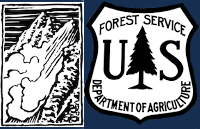20-21
GNFAC Avalanche Forecast for Fri Nov 27, 2020
<p>Today and this weekend the main avalanche concern is fresh drifts of snow. Be cautious of slopes where yesterday’s snow was drifted into thick, dense slabs. I expect this problem is most widespread in the Bridger Range, where continuous strong winds over the last 24 hours have formed wind slabs along ridgelines and downwind of trees and convex slopes at all elevations.</p>
<p>The best strategy is to avoid steep wind loaded slopes for a day or two, and then carefully assess them after that. Keep in mind, the most dangerous slopes are where these slabs formed over weak, sugary snow. These slabs on top of sugar will be unstable for longer and can be less predictable, large and very dangerous.</p>
<p>On Tuesday, Dave and I found widespread weak, sugary snow near Lionhead (<a href="https://www.youtube.com/watch?v=FBsCjnx1G-s"><strong>video</strong></a&…;) while Doug and Ian found generally stable snow in Cooke City (<a href="https://www.youtube.com/watch?v=pmsDjjnuS_4"><strong>video</strong></a&…;). Climbers in Hyalite also found weak, faceted snow in many gullies.</p>
<p>During the next week of sunny weather, before riding steeper terrain look for the persistent weak layer problem by digging down to look at the layers of the snowpack. In some places finding sugary, persistent weak layers is as easy as looking in the track from your snowmobile, or poking through the snow with your hand or ski pole. If that doesn’t show a poor snowpack structure, get out your shovel and do a quick stability test to be sure. Avoid steep slopes where you find soft, sugary snow under a cohesive, supportable slab.</p>
<p>Every day we will update the <a href="https://www.mtavalanche.com/weather/wx-avalanche-log"><strong>weather log</strong></a>, <a href="https://www.mtavalanche.com/photos"><strong>photos page</strong></a> and <a href="https://www.mtavalanche.com/avalanche-activity"><strong>avalanche activity list</strong></a>. We will continue issuing early season updates and transition to daily avalanche forecasts when we get more snow. If you have avalanche, snowpack or weather observations to share, please submit them via our <a href="https://www.mtavalanche.com/node/add/snow_observation"><strong>website<…;, email (<a href="mailto:mtavalanche@gmail.com"><strong>mtavalanche@gmail.com</strong></a…;), phone (406-587-6984), or Instagram (#gnfacobs).</p>
Upcoming Avalanche Education and Events
See our education calendar for an up to date list of all local classes. Here are a few select upcoming events and opportunities to check out:
GNFAC Avalanche Forecast for Thu Nov 26, 2020
<p>New snow and wind are the primary avalanche concerns today. Moderate to strong west winds have blown yesterday’s new snow into thicker drifts that you can trigger today. The safest solution is to simply identify and avoid steep wind drifted slopes until the new drifts have a couple days to bond. Be on the lookout for pillowy drifts of windblown snow, particularly near ridgelines and downwind of tree or rock islands. Pay attention to the texture of the snow beneath your feet or machine. If it rapidly stiffens, or you see cracks shooting in front of you, stop and reassess conditions. </p>
<p>Below the new snow, there are a mixed bag of conditions. On Tuesday, Alex and Dave found widespread weak, faceted snow near Lionhead (<a href="https://www.youtube.com/watch?v=FBsCjnx1G-s"><strong><u>video</u></stro…;). While Doug and I found generally stable snow in Cooke City, we did find some faceted snow on a north aspect (<a href="https://www.youtube.com/watch?v=pmsDjjnuS_4"><strong><u>video</u></stro…;). Climbers in Hyalite have also found weak, faceted snow lingering in gullies. Where the new snow is falling onto facets, avalanches will be easier to trigger and may break wider. Be particularly mindful of slopes where all three factors line up: new snow, drifted more deeply by wind, lying on top of a weak base. It’s early season and uncertainty is still high. We don’t yet have a clear picture of which slopes hold these weak facets and which don’t. Dig a snowpit to check for yourself before committing to avalanche terrain.</p>
<p>Every day we will update the <a href="https://www.mtavalanche.com/weather/wx-avalanche-log"><strong><u>weather log</u></strong></a>, <a href="https://www.mtavalanche.com/photos"><strong><u>photos page</u></strong></a> and <a href="https://www.mtavalanche.com/avalanche-activity"><strong><u>avalanche activity list</u></strong></a>. We will continue issuing early season updates and transition to daily avalanche forecasts when we get more snow. If you have avalanche, snowpack or weather observations to share, please submit them via our <a href="https://www.mtavalanche.com/node/add/snow_observation"><strong><u>websi…;, email (<a href="mailto:mtavalanche@gmail.com"><strong><u>mtavalanche@gmail.com</u></str…;), phone (406-587-6984), or Instagram (#gnfacobs).</p>
Upcoming Avalanche Education and Events
See our education calendar for an up to date list of all local classes. Here are a few select upcoming events and opportunities to check out:
We found a thick layer of surface hoar (1-2cm) on top of the snowpack at Lionhead Ridge on 11/24/20. Below that layer the snowpack was faceted and weak. This will be an unstable foundation for future storms. Photo: GNFAC
